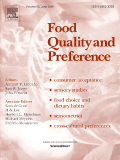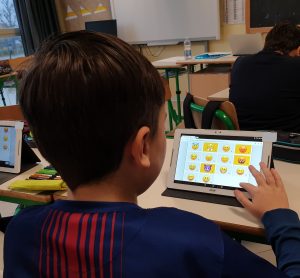New paper: Children’s selection of emojis to express food-elicited emotions in varied eating contexts

Julia Sick (ESR3) recently published her first paper within EDULIA in “Food Quality and Preference”. The paper is entitled “Children’s selection of emojis to express food-elicited emotions in varied eating contexts”. A summary of the paper is given below, for the full paper please visit our publication page.
How can we measure how children feel about food? And why is this important anyway?
Investigating emotional responses to foods is important as emotional profiles can help to better understand drivers of food choice compared to traditional liking measurements. Measuring emotions related to food products has already been studied in adults but is rather unexplored in children. Still, children are more and more regarded as a valuable consumer group and therefore it is crucial to promote healthier and tastier foods that are appreciated by them.
Sensory- and consumer research with children requires age-appropriate tools as they differ from adults in many developmental aspects. The tools need to be engaging and easy-to-use without the need of too many instructions or training. Recently, emojis emerged as attractive icons to express emotions/ feelings that are already commonly used in digital communication on various social media platforms and smartphones by adults and pre-adolescents.
This study covered the first part in the development of a food-related emotion measurement tool for pre-adolescents between 9-13 years. The aim of this study was to explore emojis that children find appropriate to describe how they feel about foods of different eating contexts (breakfast, dinner, snack, birthday, novel food, most liked and most disliked food). First, 86 children were asked to recall the foods they had in a specific eating context, and then they were asked to state how they feel about them by selecting all emojis that applied to them from a list of 92 emojis. The task was conducted on tablets.
The study showed that children were able to use specific emojis to describe how they feel about recalled foods and selected 46 emojis as appropriate to describe food-related emotions. Interestingly, gender differences were found for some specific emojis e.g. girls selected emojis with hearts more frequently compared to boys. Also, younger children (9-11 years) tended to select generally more food-related emojis than older children (12-13 years).
The next step of Julia’s research will be to explore the meaning of food-related emojis and to develop the final emotion measurement tool, which will be tested with pre-adolescents on real food products.
emoiji, emotions, ESR3, measurement tool, pre-adolescents



